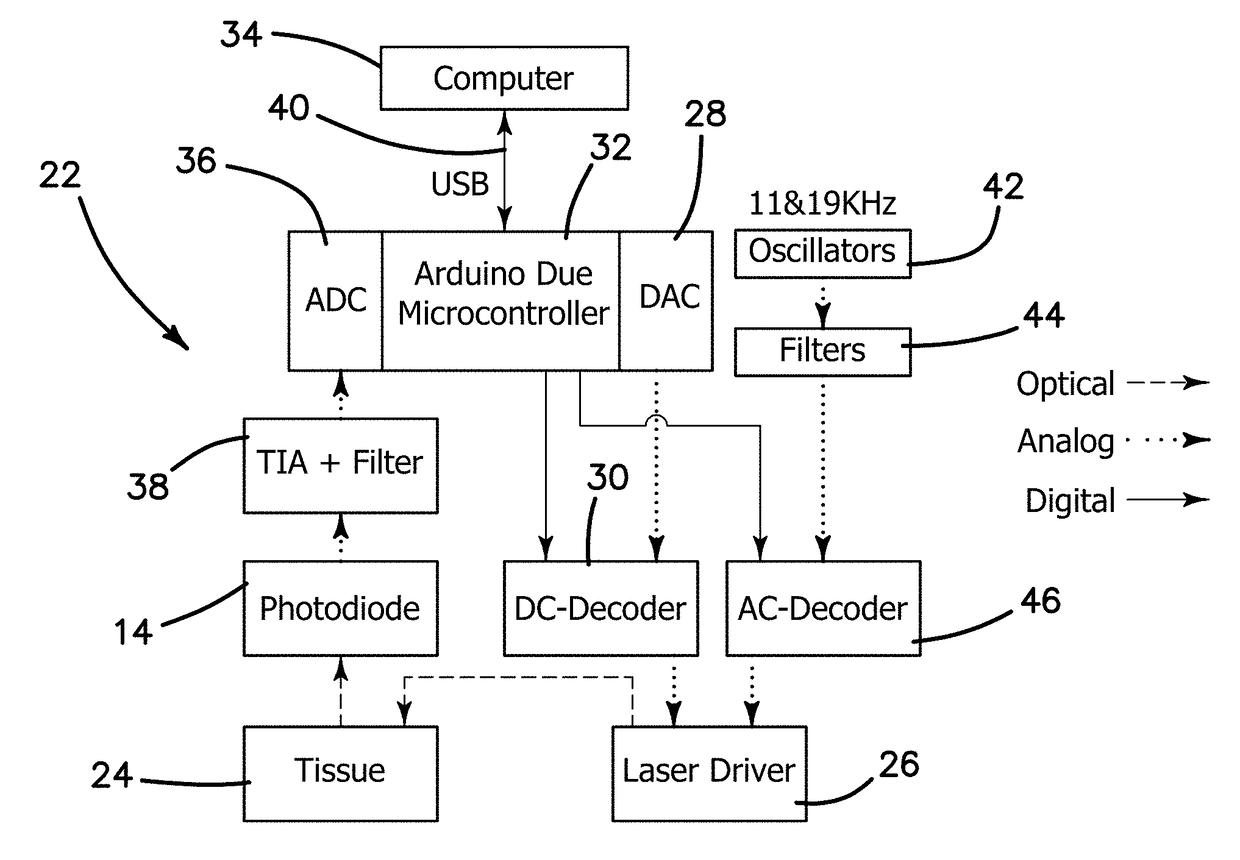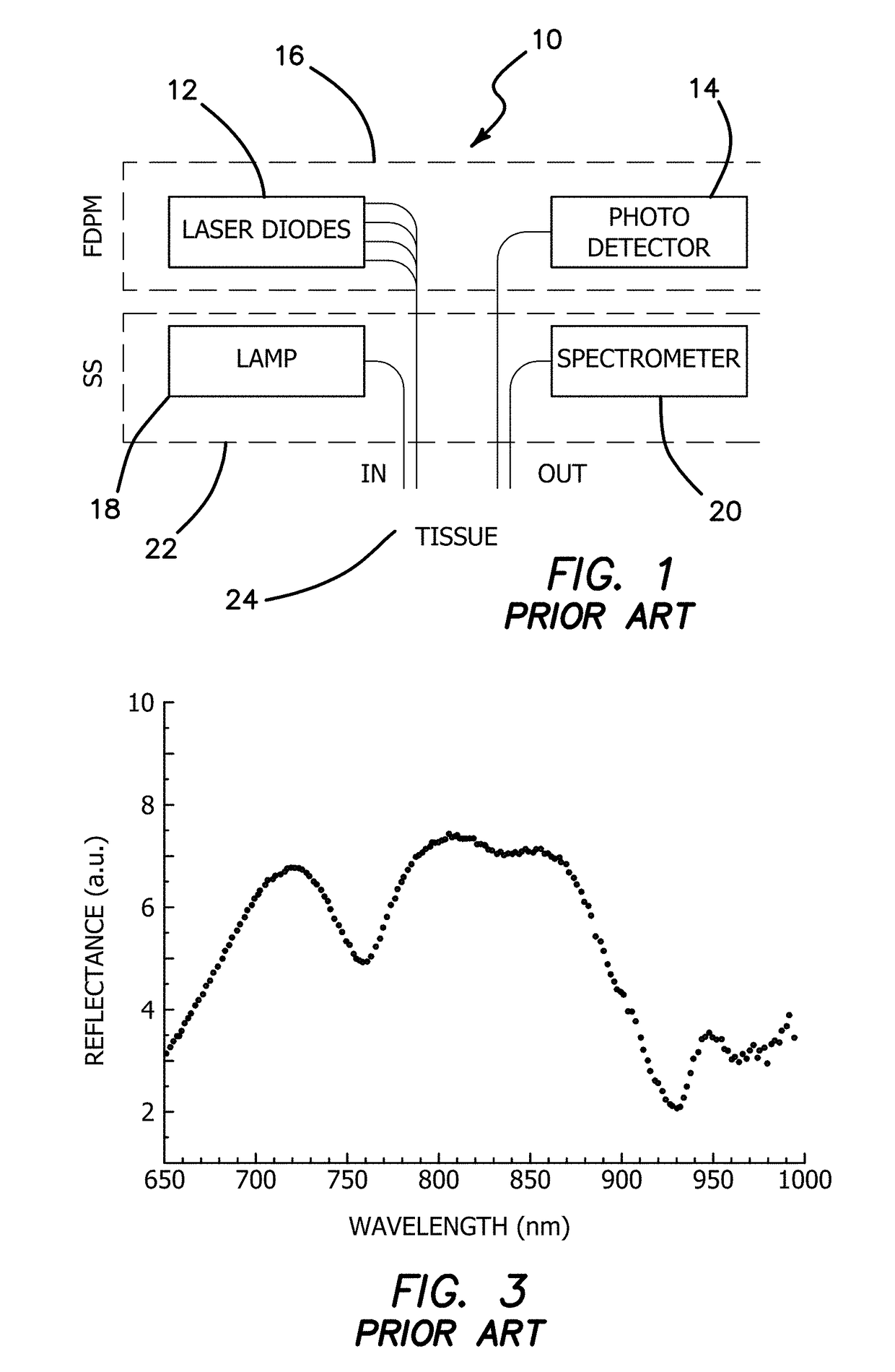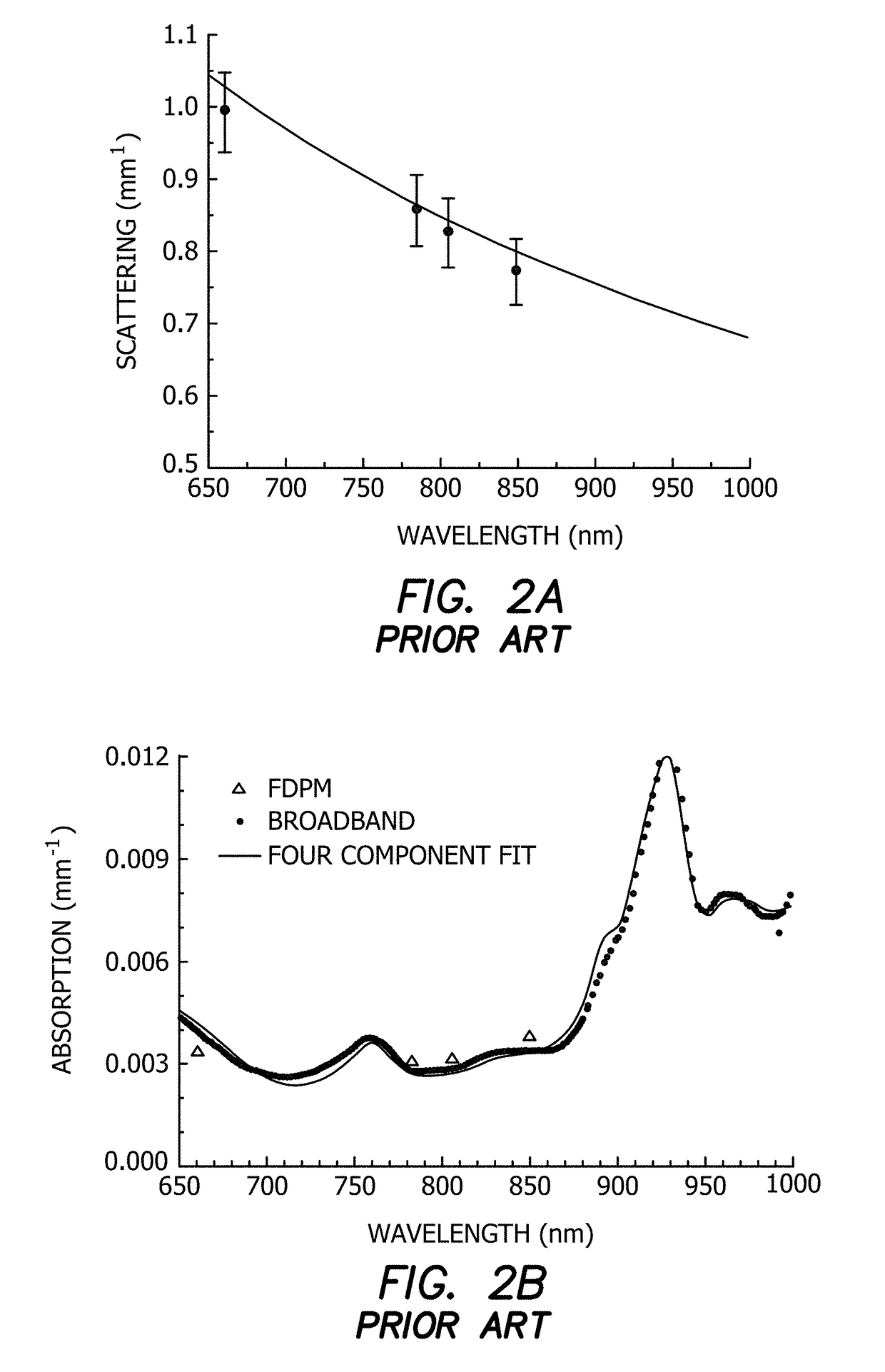Hand-held optical scanner for real-time imaging of body composition and metabolism
a real-time imaging and optical scanner technology, applied in the field of optical scanners and computational models for scanning and imaging of human body composition, can solve the problems of inability to separate scattering from absorption in a single measurement, and inability to accurately calculate the concentration of absorbers in tissue, etc., to achieve rapid information about tissue structure and composition, and low cost
- Summary
- Abstract
- Description
- Claims
- Application Information
AI Technical Summary
Benefits of technology
Problems solved by technology
Method used
Image
Examples
first embodiment
[0104]In a first embodiment, the apparatus 10 is used to extract the heart rate from the fingertip, which is also a common target for pulse-oximetry instruments. The raw data from the left index finger, where two laser diodes (780 nm and 820 nm) were used in FDPM module 16 and / or CW module 18 and data recorded at sample rate of 250 Hz is shown in FIG. 13. The wavelengths of the laser diodes were selected below and above the isosbestic point (810 nm) where both deoxygenated hemoglobin and oxygenated hemoglobin have the same absorption coefficients. As our control, we used a commercial system that was placed on the index finger of the right hand. We calculated the heart rate from raw optical and oxygenated hemoglobin concentrations signals with two different approaches. First, we ran a peak searching algorithm to find the corresponding peak in the photoplethysmogram (PPG) signal and divide the number of peaks by measurement duration to obtain an average per second, and then multiplied...
second embodiment
[0123]In the second embodiment, we used our system to recover a respiration rate which is another important vital signal in clinical settings. Subjects were instructed to synchronize their breath to a 0.25 Hz signal using a video clip. Optical data (four wavelengths) was recorded from wrist and triceps muscle tissue with 2 cm source-detector separation at 80 Hz rate. Combination of EMD-FFT was again utilized to extract desired information. We were able to characterize the vasculature response to the stimuli by extract the induced frequency from both time domain and frequency domain signals of oxygenated and deoxygenated hemoglobin concentrations. In the wrist tissue, time domain result (EMD) showed four peaks during sixteen seconds which corresponds to a 0.25 Hz signal in frequency domain. The respiration rate recovered from oxy-Hb by FFT method was 0.235 Hz while the deoxy-Hb showed a 0.230 Hz peak (2.2% difference). In the arm tissue, measurement duration was increased from sixtee...
third embodiment
[0124]In a third embodiment, we used the continuous-wave system for characterizing muscle vasculature reactivity to changes in blood flow. Cardiovascular disease impairs the vessels' ability to change their diameter and architecture in response to stimuli. Cuff occlusion is a common method for assessing vasculature reactivity and changing blood flow. We chose the left arm's brachial artery for the occlusion site and forearm muscle for optical monitoring. It has been established to analyze the rate of tissue ischemia and recovery to assess vascular reactivity. In addition to this parameter, we also took advantage of system high speed data acquisition to look at dynamic changes in oxygenated hemoglobin and recover heart rate during the measurements. We compared our pulse rate results to ones from commercial pulse oximeter system since we used it to monitor the index finger. They are in agreement with less than 8% differences. This shows the system ability to monitor hemodynamics chang...
PUM
 Login to View More
Login to View More Abstract
Description
Claims
Application Information
 Login to View More
Login to View More - R&D
- Intellectual Property
- Life Sciences
- Materials
- Tech Scout
- Unparalleled Data Quality
- Higher Quality Content
- 60% Fewer Hallucinations
Browse by: Latest US Patents, China's latest patents, Technical Efficacy Thesaurus, Application Domain, Technology Topic, Popular Technical Reports.
© 2025 PatSnap. All rights reserved.Legal|Privacy policy|Modern Slavery Act Transparency Statement|Sitemap|About US| Contact US: help@patsnap.com



